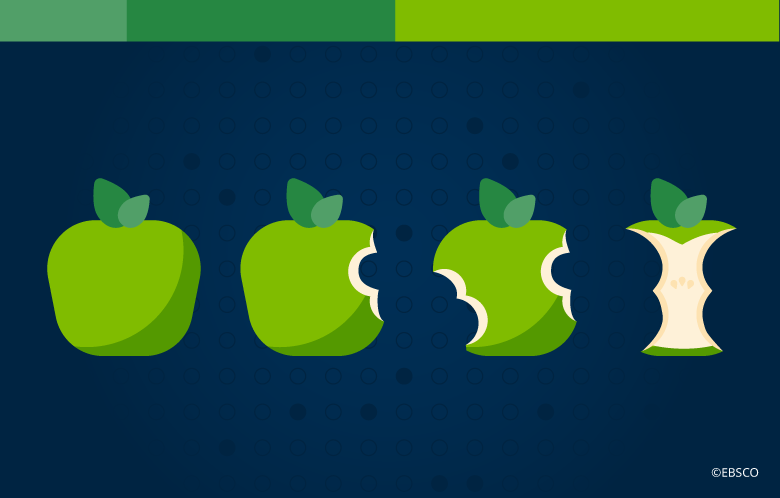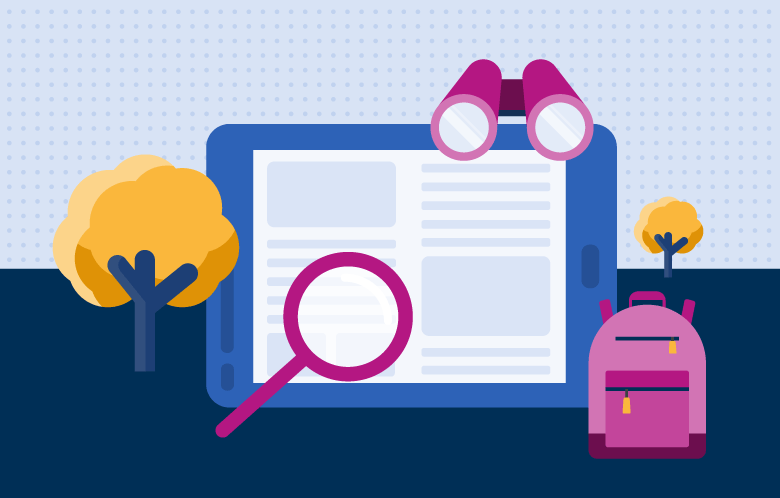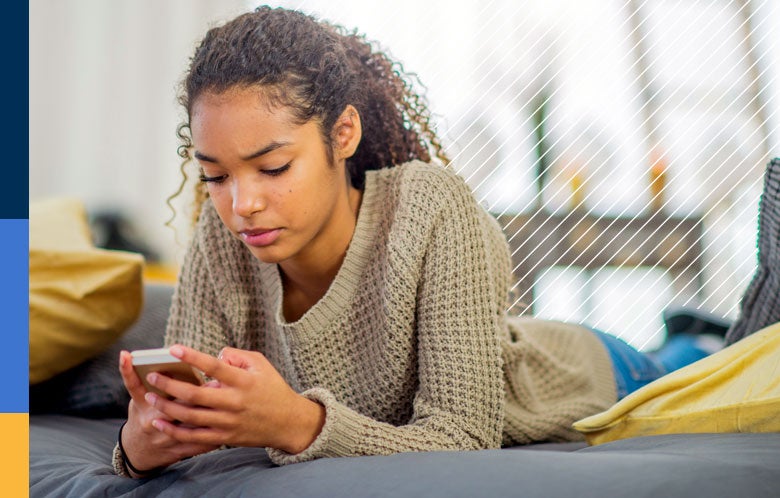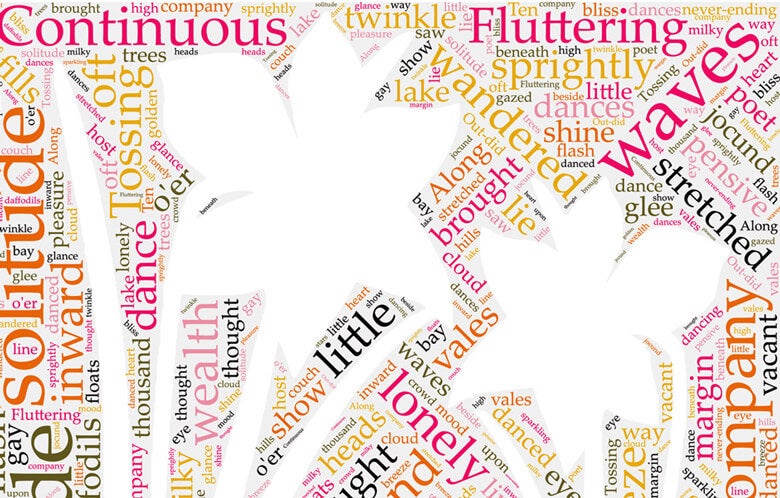Nearly everyone has experienced visiting a restaurant and feeling overwhelmed when the meal arrives and is much bigger than expected. In these instances, it’s always best to pace ourselves, savor each bite, and pack up what we don’t finish in a to-go carton to be consumed later. This analogy can be applied to the teaching and learning of information literacy skills.
Bite-sized learning (also called microlearning) is characterized by short, concise lessons that take only five to 10 minutes to deliver. Bite-sized lessons focus on a specific objective. For information literacy instruction, objectives may include:
- Navigating the library’s website
- Learning about library databases
- Developing a research topic or question
- Generating search terms
- Building a search strategy
- Evaluating resources (including recognizing the difference between scholarly and popular sources)
- Understanding the value of primary sources and how they differ from secondary sources
- Understanding the value of seeking contrasting viewpoints
- Avoiding plagiarism
- Properly citing sources
Benefits
Students who are exposed to bite-sized learning are more likely to retain the material because smaller bites of information are easier to digest. In fact, an RPS research study showed that microlearning improves retention by as much as 80 percent. English-language learners or students who have shorter attention spans may also greatly benefit from bite-sized lessons. Finally, bite-sized learning gives educators the opportunity to differentiate their instruction, taking into consideration their students’ varying learning styles.
Resources
Librarians and other educators can use a variety of resources to deliver microlessons, including infographics, images, videos, TED Talks and podcasts. We’ve curated a few resources to help librarians get started in building their own bite-sized lessons, specifically focused on information literacy and research instruction.
Videos
Educators can use videos to introduce a topic or to review key ideas and concepts. Using video clips can amplify learning as they provide students another way to access course content. The following short videos cover aspects of the research process:
- Why You Need Library Databases for Research
- Choosing a Topic & Developing a Research Question
- How to Choose Keywords
- Searching with Boolean Operators
- Using Primary & Secondary Sources
- Citing Sources: Why & How to Do It
TED Talks
TED Talks can inspire viewers, especially when they’re led by a charismatic presenter or subject-matter expert. Like videos, TED Talks can introduce a topic or serve as a tool for reinforcing key ideas or lessons. Though some may be longer than 10 minutes, the following TED Talks can be used to support information literacy instruction:
- Christiane Amanpour: How to seek truth in the era of fake news (14 minutes)
- Andreas Ekstrom: The moral bias behind your search results (9 minutes)
- Markham Nolan: How to separate fact and fiction online (18 minutes)
- Eli Pariser: Beware online “filter bubbles” (9 minutes)
Also be sure to peruse TEDEd for video-based lessons such as Why people fall for misinformation. Lessons are organized by subject and age group.
Podcasts
Common Sense Education has curated 25 Great Learning Podcasts for the Classroom to support instruction across subject areas, but if you’re looking for podcasts focused on digital and information literacy, look no further than the Premier Skills English Digital Literacy podcast series, produced by the Premier League and the British Council. Topics include using technology, using search engines, and spotting fake news. Full transcripts are also available.
Educators looking for tips on teaching elementary school students how to build their information literacy skills might enjoy 5 Steps to Fact Checking, an episode of the 10 Minute Teacher Podcast.
Infographics
Infographics provide educators with a way to convey data and information to students in a visually appealing way. Infographics incorporate text and images and may include bar graphs, pie charts, flow charts and timelines. These creative graphics can help tell a story that captures students’ attention and improves the likelihood of retention, especially for visual learners.
- Infographic: Fact or Fiction? Use Freddie’s 10 Tips to “Ferret Out” Fake News (Poster also available)
- Flowchart: Did I Plagiarize? The Types and Severity of Plagiarism Violations
- Infographic Poster: Is This Story Share-Worthy?
- Poster: Be a Stellar Digital Citizen
Handouts and Guides
EBSCO has created a research guide and several handouts to help educators walk students through the research process. Use handouts in conjunction with the tools mentioned above.



